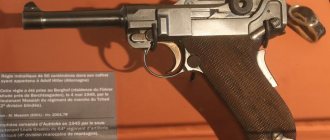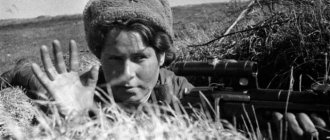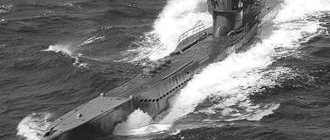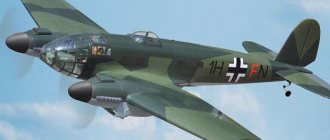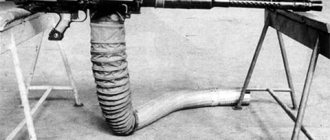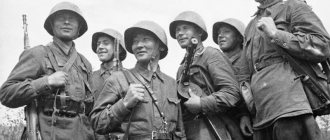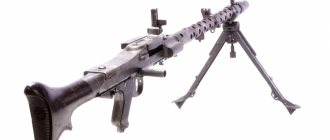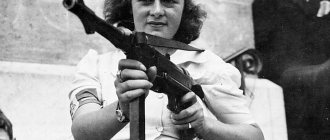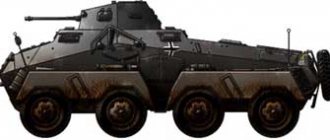Nazi Germany was seriously preparing for war with the Soviet Union. Both the industrial, scientific, and human resources of their own country, as well as the potential of all the enslaved countries of Europe, were involved. Austria and the Czech Republic, along with the Reich, were a forge of weapons, a repair base for military equipment and weapons of the Wehrmacht. Tanks, planes, guns, as well as a variety of small arms for the ground forces came in a continuous stream to the Eastern Front, only to remain melted, twisted scrap metal on Russian soil. German pistols of the Second World War, which were in service with the Wehrmacht, today are often idealized and collected; lovers and connoisseurs of weapons on forums often call them an example of design thought and its embodiment in metal. Was this for real or just another hoax?
Red Army
In the USSR, as you know, there was only one military pistol at that time: the “Tula Tokarev” model of the 30th or 33rd year. With a total weight of just under a kilo, it could hold eight 7.62x25 mm cartridges - the Soviet version of the German cartridge for the famous K96 Mauser. There was no special safety in the design; instead, it was possible to put the trigger on the safety cock.
Junior political instructor Alexey Eremenko with a TT pistol raises the fighters to attack
During comparative tests, it turned out that the TT misfired three times when dusty, once when firing straight down, and it didn’t work out at all with cooling.
StG 44
German assault rifle, automatic. In fact, the first representative of the entire modern generation of machine guns and assault rifles. Also known as MP 43 and MP 44. It could not fire in long bursts, but had much higher accuracy and firing range compared to other machine guns of that time, equipped with conventional pistol cartridges. Additionally, the StG 44 could be equipped with telescopic sights, grenade launchers, as well as special devices for firing from cover. Mass-produced in Germany in 1944. In total, more than 400 thousand copies were produced during the war.
USA
In the American army, the Colt M1911 had long been firmly established on the throne of personal weapons by this time. There are seven cartridges in the magazine, but of .45ACP caliber, or 11.43 mm. Of course, the “Koltych” weighed more than the TT: a kilo and more than a hundred grams.
American soldier with a Colt M1911 pistol
If they ran out of cartridges, it was easier for them to hit the enemy on the dome.
And the American had two fuses at once - a regular one, switched with a finger, and an automatic one, which was activated when the handle was grasped.
M3 "Oil Can"
The American M3 submachine gun was developed in 1943 as a cheap replacement for the Thompson; soon modified versions of it appeared. Accessories to the weapon included an oiler in the pistol grip and an ingenious retractable steel wire stock. Separate parts of the butt could serve as a screwdriver, a wrench for separating the barrel, a cleaning rod and a device for equipping a magazine. Although the M3 did not have a single-fire mode, the rate of fire was exceptionally low, amounting to only 450 rounds per minute, and the placement of the barrel in line with the buttstock made it easier to control recoil. A trained soldier could also fire single shots. Before opening fire, the cover of the window for spent cartridges had to be manually opened, which also served as a fuse.
The American M3, or "Oil Can" submachine gun, .45 caliber, which appeared in 1943, was the embodiment of a number of innovative solutions
The M3 body was made of two stamped metal parts connected by welding; the barrel was secured with a simple nut, and the bolt moved along two guide rods inside the receiver. This provided clearance between the bolt and the receiver so that contamination of the weapon did not cause it to jam. The only design flaw was the unreliable fixation of the magazine in the receiver. This submachine gun received its nickname due to its unusual appearance, which resembled a car oil syringe.
The M3 magazine held 30 rounds of .45 AKP ammunition, which was also used in the M1911A1 pistol and the Thompson submachine gun. The weapon remained in service with American infantry through the Korean and Vietnam wars, and some units were armed with it even during the first Gulf War in 1990-1991.
England
The traditional British army has long preferred revolvers. The domestic manufacturer was partly to blame for this. The pistols may have shot well, but it was not particularly pleasant for a gentleman with a keen sense of beauty to pick them up.
British soldier with a Browning Hi-Power pistol
But, as they say, there would be no happiness, but misfortune helped. After the defeat in 1940, following the remnants of the British Expeditionary Force, a certain Sav, a sidekick of John Browning himself, sailed to England. And not empty-handed, but with a suitcase full of drawings, among which was their last joint creation with John. This is how the British and other Australians and Canadians came up with “High Power”.
Thirteen-round magazine and thirty-three treats included.
During tests in 1942, it proved to be the most reliable: 12 delays with thick grease and five with freezing.
British Sten submachine gun
Following the French surrender and evacuation from Dunkirk in 1940, the British faced the looming threat of a heavily armed German army invading the islands. There was an urgent need for automatic weapons. The answer to the challenge was the British submachine gun, developed by Major R. W. Shepherd and H. J. Turpin at the Government Small Arms Factory in Enfield. “Sten” (STEN) received its name by adding the first letters of the names of the designers (RV Shepherd and N. J. Turpin) and the name of the weapons company (Enfield).
The Sten Mk I submachine gun entered service in the summer of 1941, but due to its rough finish and awkward appearance, it was received rather coolly by the troops.
"Sten" was produced in huge quantities in Britain and Canada, and by the end of the war, about 3.25 million units were manufactured. This submachine gun was cheap and easy to manufacture. The weight of the weapon was about 3500 g, all modifications worked on the principle of a free shutter, the rate of fire was 540 rounds per minute, and the initial bullet speed was 366 m/s. The magazine capacity is 32 rounds, however, due to problems with the spring, the magazine was usually equipped with only 30 rounds. In the period 1940-1945. The Sten was repeatedly modified and improved, so that several models existed.
The Sten Mk I, which was equipped with a flash suppressor, a wooden fore-end and a folding front handle, quickly gave way to the Sten Mk II, which was produced in mass quantities. The Mk II was more compact and easily disassembled, the weapon could be concealed, and it became the weapon of choice for many European Resistance units. The magazines of the German MP-40 approached the “Sten”, which was very convenient, since it was possible to use captured ammunition. The weak point of this weapon, like the German MP-40, was the magazine fastening, due to the distortion of which there were delays when firing. The weapon was as simple as possible and consisted of 47 steel parts, which were connected to each other by welding and riveting. The only components that required machining were the bolt and barrel. A total of 2 million Sten Mk II were produced.
Women's military training in Britain in 1941. In the foreground is a Sten Mk III, in the background is a Mk I. Submachine guns are not cocked as the women practice basic weapon holding and aiming techniques
One of the requirements for the developers was the ability to produce a submachine gun at non-specialized enterprises. An example of such a weapon was the “Sten” Mk III with a barrel tightly connected to the body, and a bolt box and barrel casing made in one piece by welding. It was produced by , which usually produced children's toys. The Mk III was in service with troops during the Normandy invasion in 1944. Surprisingly, this superior variant of the "Wall" was not produced in large numbers.
Although "Walls" were intended to arm the crews of combat vehicles, reconnaissance groups and anyone who did not need long-range weapons, they were mainly used by infantry, especially platoon commanders, sergeants and squad leaders. Pistols were the personal weapons of senior officers, but many preferred the Sten due to its greater combat power.
The silent "Sten" Mk II (C) was developed in 1943. This modification, which allows firing single shots, was popular with Resistance fighters. It was possible to fire bursts from it, but at a rate of fire of 450 rounds per minute, the muffler quickly burned out
Among the troops, the “Sten” caused a lot of complaints due to frequent jamming in case of contamination or spontaneous firing when dropped. This happened to Corporal Proctor of the Somerset Light Infantry during an operation in Holland in 1944. The soldier slipped, dropped his Sten, the weapon hit the ground and fired, wounding Proctor in the groin. The platoon commander, Lieutenant Djari, cursed this weapon with the following words: “... In the minds of these designers there was only one thing - how to reduce the cost of mass production... It did not have a safety lock, and with strong shaking the bolt could move back, making room for a cartridge from the magazine, and then this cartridge would go into the chamber and fire.”
"Walls" in war
The Sten was first used in combat during the disastrous raid on Dieppe in August 1942. Before the raid, Canadian soldiers spent several weeks adjusting and testing their Sten to ensure trouble-free operation. But the first raid, codenamed "Jubilee" in July, was called off. The day before the start of Operation Pilot, the soldiers received completely new “Walls”, still in boxes and in factory lubricant.
Captain Brian Priday, second-in-command of the 2nd Battalion, Light Infantry, armed with a Sten Mk V with bayonet (Normandy, 6 June 1944). Two key bridges over the Orne River and the Orne Canal have just been captured.
German copies of "The Wall"
Despite its shortcomings, the simplicity and low cost of production of the "Wall" allowed the Germans in 1944-1945. release copies of it under several designations: “9 mm Maschinenpistole 3008”, “Volksmaschinenpistole”, “Geret Potsdam” and “Maschinenpistole 749 (e)”. Since it was manufactured by all and sundry, this submachine gun was used for many years after 1945. The American technical reference Unusual Military Devices and Techniques describes a copy of the Sten Mk II captured from the Viet Cong in 1964 during the Vietnam War.
Germany
The Germans, as you know, during the Second World War, in terms of short-barreled weapons, proved themselves to be quite fleabags. In addition to the famous P08 "Luger" (aka "Parabellum"), they were armed with the "Walter" P38, as well as a collection taken from the occupied countries and from the allies - from the Polish "Vis" and the Spanish "stars" (Star) to "High Power" in the Belgian version.
German officer with P08 pistol
Both original “Germans” - P08 and P38 - had magazines for eight rounds of 9x19 mm cartridges. The younger P38 received a double-action trigger mechanism, but people still loved and appreciated the old Parabellum more: it was believed that it was of higher quality, and it was better to hit. However, even during the tests the old Luger showed itself to be invigorating. Only he did not tolerate the frost well, but this is understandable - age. True, the P38 also did not “appear” to Soviet testers. When frozen, he shut up a little less often than the Luger, but he was even more afraid of dust and dirt.
Thompson submachine gun
At the beginning of 1920, it released a prototype, the rate of fire of which was 800 rounds per minute.
Despite the good test results, neither the US Army nor the Marine Corps accepted the Thompson for service. However, Thompson was able to secure a contract to produce 15,000 “Thompson Model 1921 submachine guns.”
"Thompson" М1928А1 with a twenty-round magazine. Although the weapon, weighing 4880 g, was heavy, it was reliable and survivable and was popular with US and Allied forces, especially among British commandos
There were no further orders for the submachine gun until the United States entered World War II. Since 1942, the volume of orders has increased sharply. The Thompsons were superior to other submachine guns in terms of reliability and survivability. The British commandos did not abandon their Thompsons even after the British Sten became an affordable weapon, and on the day of the Normandy invasion in 1944 they were armed with them. The main disadvantages were its heavy weight, the inability to shoot accurately at distances greater than 45 m, and low penetrating power. However, in close combat this weapon was extremely effective.
Finland
The Finnish weapons designer Aimo Lahti was greatly disturbed by Vasily Degtyarev. He interfered - in the sense of constantly stepping on his heels and breathing down his back. Aimo made a light machine gun - and Vasily made it, and even with a disk so that it could fit more cartridges. Lahti will just make the Suomi submachine gun - and Degtyarev is right there with his PPD (Degtyarev submachine gun). A Finn will make an anti-tank rifle, sigh - bam, and the Red Army already has a PTRD (a single-shot anti-tank rifle of the Degtyarev system) in service.
Finnish officers with Lahti L-35 pistols
And only with the pistol adopted for service was Lahti able to relieve his soul. Degtyarev didn’t have it, but Aino did. True, if the “polar” pistol of Lahti was friendly with frost (although even here the “High-Power” outperformed it), then with thick grease and dust it was quite the opposite.
4. KA-BAR combat knife
The armament and equipment of soldiers of any war is unthinkable without mention of the use of so-called trench knives. An indispensable assistant for any soldier for a variety of situations. They can dig holes, open cans, be used for hunting and clearing a path in a deep forest, and, of course, used in bloody hand-to-hand combat. Only more than one and a half million were produced during the war years. It was widely used when used by US Marines in the tropical jungles of the islands in the Pacific Ocean. And today the KA-BAR knife remains one of the greatest knives ever created.
Japan
The Japanese had Nambu pistols. But let's not talk about sad things.
Japanese soldiers with Nambu pistols
Well, most WWII pistols were about equal. Eight rounds, as practice has shown, were quite enough to shoot back... well, or shoot yourself, if military luck did not smile. The only one that stood out sharply in terms of combat qualities was the Browning GP 35, aka Hi-Power, aka Pistole 640(b). In fact, it was this weapon creation that became the ancestor of modern military pistols - with a large-capacity magazine, chambered for 9x19 mm.
But that’s “a completely different story.”
Lee Enfield
The famous British rifle has received many modifications and has a glorious history dating back to the end of the 19th century. Used in many historical and military conflicts. Including, of course, in the First and Second World Wars. During World War II, the rifle was actively modified and equipped with various sights for sniper shooting. I managed to “work” in Korea, Vietnam and Malaya. Until the 70s, it was often used to train snipers from different countries.


